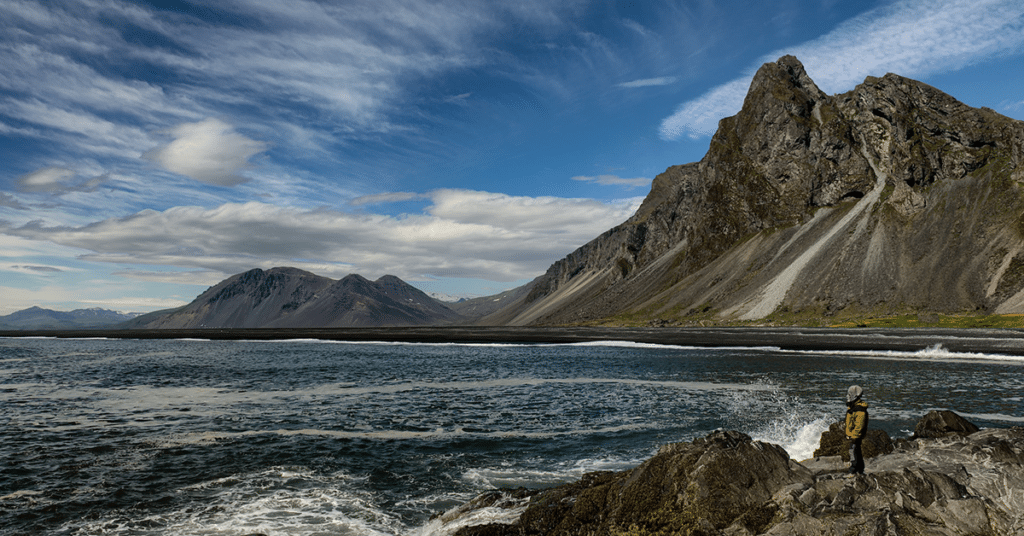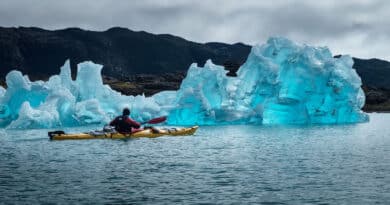Leave No Trace: The Ultimate Guide to Responsible Outdoor Recreation
So what exactly is the leave no trace concept?
The call of the wild has a profound allure, drawing countless individuals to the great outdoors each year.
Whether it’s the breathtaking vistas of towering mountains, the tranquility of a serene forest, or the rhythmic lullaby of ocean waves, our natural world offers respite, adventure, and connection.
Outdoor recreation, in all its forms, nourishes our spirits and fosters a profound appreciation for the environment.
Yet, as the number of outdoor enthusiasts continues to grow, so does our collective impact on these cherished landscapes.
With increased foot traffic, litter, and overuse of natural resources, it has become imperative for all who venture into the wild to adopt a mindset of responsibility.
- Leave No Trace Principles: A Foundation for Sustainability
- Purpose and Scope of the Guide
- Leave No Trace Principles Explained
- Principle 2: Travel and Camp on Durable Surfaces
- Principle 3: Dispose of Waste Properly
- Principle 4: Leave What You Find
- Principle 5: Minimize Campfire Impact
- Principle 6: Respect Wildlife
- Principle 7: Be Considerate of Other Visitors
- Leave No Trace and Wilderness Ethics
- Conclusion
- Learn More
Responsible outdoor recreation is not merely an ideal; it is an ethical obligation we owe to the Earth itself and to future generations. It is a commitment to protect and preserve the very environments we love to explore.
Leave No Trace Principles: A Foundation for Sustainability
Central to the concept of responsible outdoor recreation are the Leave No Trace principles.
Developed by the Leave No Trace Centre for Outdoor Ethics, these principles provide a comprehensive guide to minimizing our environmental impact while maximizing our outdoor experiences.

Based on a set of seven core principles, Leave No Trace encapsulates a philosophy that empowers adventurers to enjoy the outdoors without leaving a detrimental mark on the environment.
These principles extend beyond just guidelines; they represent a foundation for sustainability. They equip outdoor enthusiasts with the knowledge and tools needed to tread lightly, respect wildlife, and ensure that our activities do not compromise the delicate balance of nature.
Leave No Trace offers a blueprint for a harmonious coexistence between humans and the natural world, fostering a sense of stewardship that is crucial for the preservation of our planet.
Purpose and Scope of the Guide
The purpose of this guide is to serve as your compass on the journey towards responsible outdoor recreation.
We recognize that the beauty of the outdoors is vast and varied, and so is the spectrum of activities one can partake in. From hiking to camping, fishing to photography, this guide is designed to be your go-to resource for understanding how to apply Leave No Trace principles to different environments and activities.
As we navigate through the chapters, we will delve into each of the seven Leave No Trace principles, offering practical tips, real-life examples, and case studies to help you integrate these principles into your outdoor adventures seamlessly.
We’ll explore how to be a responsible steward of the environment, respect other visitors, and appreciate the profound impact your actions can have.
Ultimately, this guide is not just a manual; it’s an invitation to embark on a journey of responsible outdoor exploration.
It’s a testament to the belief that we can all be responsible stewards of our natural world, leaving it better than we found it. So, let’s set forth into the wild with Leave No Trace as our guiding light, and together, we can ensure that the beauty of the outdoors endures for generations to come.
Leave No Trace Principles Explained
When it comes to responsible outdoor recreation, the first and most crucial step is to plan ahead and prepare. This principle forms the foundation upon which all other Leave No Trace principles are built.
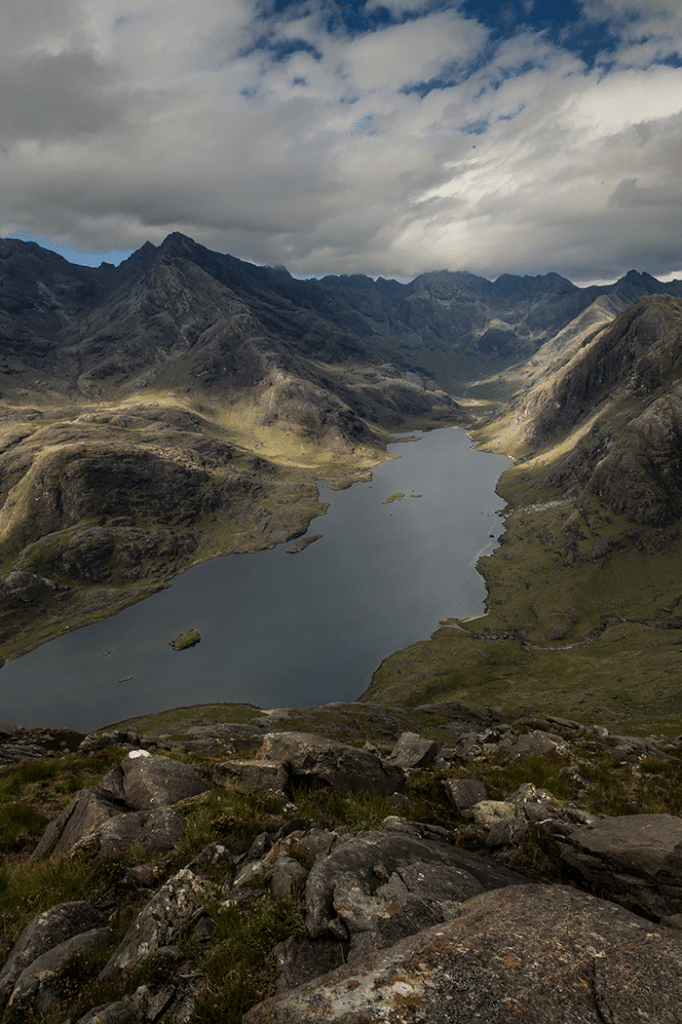
Proper planning not only enhances the safety and enjoyment of your outdoor adventure but also minimizes your impact on the environment.
Research and Trip Planning
Know Your Destination: Start by thoroughly researching the area you plan to visit. Understand the terrain, weather patterns, and regulations specific to that location. Knowing what to expect can help you make informed decisions throughout your trip.
Seasonal Considerations: Different seasons bring unique challenges and opportunities. Plan your trip during a season that aligns with your goals and skill level. For example, winter camping requires different preparations than a summer hike.
Trail Conditions: Check for trail conditions, closures, or advisories. This information can be invaluable in ensuring your safety and reducing your impact on fragile ecosystems.
Proper Gear and Clothing
Selecting the Right Gear: Invest in high-quality outdoor gear and equipment suitable for your activity and the expected conditions. Well-maintained gear not only enhances your comfort but also minimizes the need for resource-intensive replacements.
Layering: Dress in layers to adapt to changing weather conditions. This allows you to stay comfortable while avoiding excessive sweating, which can lead to moisture-related problems like hypothermia.
Leave Non-Essentials Behind: Every additional item you carry increases your environmental footprint. Prioritize essential items and avoid overpacking. A lightweight and minimalist approach to gear is both environmentally and physically beneficial.
Emergency Preparedness
Inform Others: Share your trip itinerary with a trusted friend or family member. Provide them with details of your route, expected return time, and emergency contacts. This information can be crucial if you encounter difficulties.
Navigation Skills: Acquire basic navigation skills and carry appropriate tools like maps, compasses, and GPS devices. These tools can help you stay on track, reducing the risk of getting lost.
Find the perfect solar panels for RVs
First Aid: Carry a well-stocked first aid kit and know how to use it. Basic first aid skills can be invaluable in treating minor injuries and stabilizing more serious conditions until help arrives.
Leave No Trace Ethics in Emergencies: Even in emergency situations, strive to minimize your impact. Avoid creating new trails, disturb wildlife as little as possible, and follow Leave No Trace principles to the best of your ability.
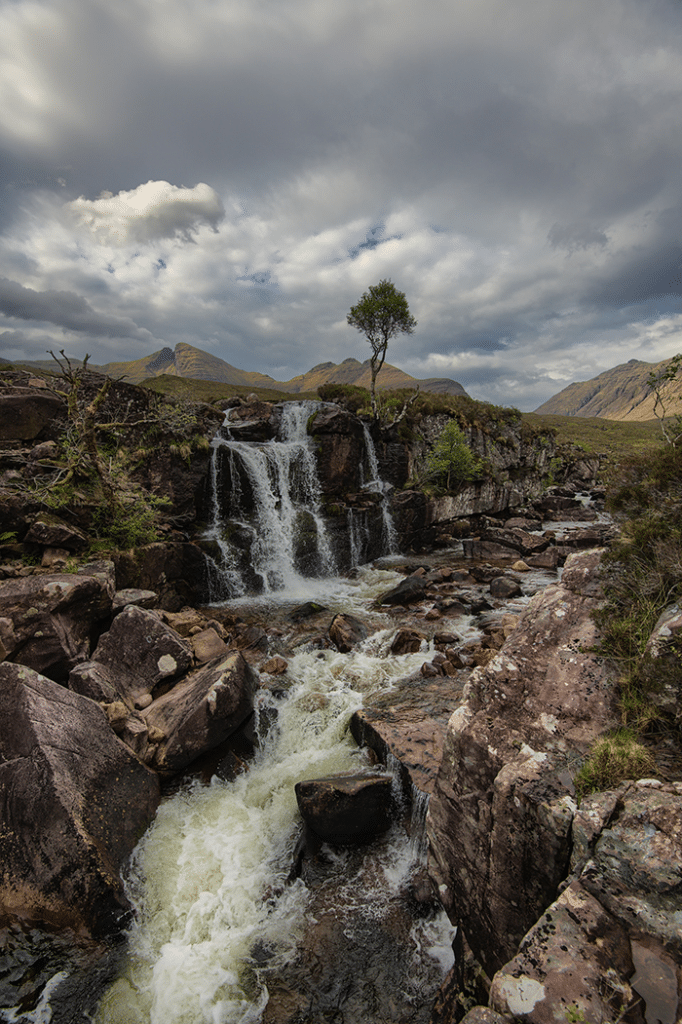
By diligently following the Plan Ahead and Prepare principle, you not only enhance your own safety and enjoyment but also demonstrate a commitment to responsible outdoor recreation. Your preparedness reduces the likelihood of needing assistance and minimizes the environmental impact of your presence in the great outdoors.
This principle sets the stage for a Leave No Trace journey that respects both nature and fellow outdoor enthusiasts.
Principle 2: Travel and Camp on Durable Surfaces
Travel and Camp on Durable Surfaces is the second Leave No Trace principle, and it focuses on minimizing the environmental impact of your presence while traversing and camping in the outdoors.
This principle emphasizes the importance of preserving fragile ecosystems and natural habitats.
Selecting Campsites
Established Campsites: Whenever possible, choose established campsites or areas designated for camping. These areas are typically equipped with amenities like fire rings, tent pads, and established trails, which are designed to minimize environmental impact.
Camp at Least 200 Feet from Lakes and Streams: To protect water quality and sensitive riparian zones, camp at least 200 feet away from lakes and streams. This distance helps prevent soil erosion and pollution of water sources.
Use Existing Fire Rings and Cooking Areas: If fires are allowed and fire rings exist, use them rather than creating new ones. Concentrating fire impact in established areas helps prevent the proliferation of fire scars and damage to vegetation.
Follow Leave No Trace Campfire Guidelines: If fires are permitted and necessary, adhere to Leave No Trace campfire guidelines, such as using small sticks and twigs for fuel, keeping fires small, and fully extinguishing fires before leaving the campsite.
Minimizing Impact on Trails
Stay on Designated Trails: Stick to established trails and paths to avoid trampling fragile vegetation and causing soil erosion. Cutting switchbacks or creating new trails can lead to long-lasting damage.
Walk Single File in the Centre of the Trail: If you encounter a muddy or wet trail, walk single file in the centre to minimize widening the path. This helps maintain trail integrity and prevents further erosion.
Refrain from Creating “Social Trails”: “Social trails” are unauthorized paths created by individuals who veer off established trails. Resist the temptation to create or follow these shortcuts, as they contribute to habitat disruption and soil erosion.
Protecting Sensitive Ecosystems
Stay Out of Fragile Areas: Be aware of fragile ecosystems, such as alpine tundra, desert soils, and wetlands. These areas are particularly vulnerable to damage. Respect posted signs and guidelines that indicate where access is restricted.
Avoid Trampling Vegetation: Stepping on or disturbing vegetation, especially in sensitive environments like deserts and alpine meadows, can take years or even decades to recover. Walk carefully to avoid harming plants, mosses, or lichens.

Manage Waste Properly: Dispose of waste, including human waste, in appropriate and designated ways. In fragile ecosystems, such as deserts, pack out all waste in accordance with Leave No Trace principles.
By adhering to the “Travel and Camp on Durable Surfaces” principle, you not only reduce your environmental impact but also contribute to the preservation of natural landscapes for future generations. Responsible camping and hiking practices help protect fragile ecosystems, maintain the beauty of outdoor areas, and ensure that others can continue to enjoy the outdoors with minimal disruption.
Principle 3: Dispose of Waste Properly
Dispose of Waste Properly is the third Leave No Trace principle, emphasizing the importance of responsible waste management in the outdoors. Proper waste disposal is essential for preserving the pristine beauty of natural environments and preventing pollution.
Pack It In, Pack It Out
Leave No Trace Ethic: The golden rule of outdoor ethics is to leave no trace of your visit. This means taking everything you bring with you back out, including trash, food scraps, and personal items.
Trash and Litter: Ensure that all trash and litter are securely stored in your backpack or a designated waste container. Never leave garbage behind, as it not only mars the landscape but also poses a danger to wildlife.
Use Reusable Containers: Minimize waste generation by using reusable containers for food and beverages. Avoid single-use plastics and disposables whenever possible.
Human Waste Disposal
Use Established Toilets: Whenever available, use established restrooms and toilet facilities. These facilities are designed to manage waste appropriately.
Pack Out Used Toilet Paper: If no facilities are available, carry a sealable bag or container for used toilet paper and hygiene products. Do not bury or burn these items, as they can take a long time to decompose.
Waste Reduction Tips
Pre-Trip Planning: Reduce waste by planning meals carefully. Opt for lightweight, dehydrated, or freeze-dried foods that generate less packaging waste.
Pack Reusable Utensils: Carry reusable utensils, plates, and cups to minimize the need for disposable tableware.
Repurpose or Compost Food Scraps: Rather than leaving food scraps behind, repurpose them in your meals or carry them out for proper disposal. Composting food scraps is also an eco-friendly option when available.
Avoid Single-Use Items: Choose reusable water bottles, containers, and cutlery instead of single-use plastics. These choices not only reduce waste but also contribute to a healthier environment.
Educate Yourself: Learn about local regulations and waste disposal guidelines specific to the area you are visiting. Different regions may have unique waste management requirements.
Responsible waste disposal is a fundamental part of outdoor ethics.
By following the Dispose of Waste Properly principle, you contribute to the preservation of the natural environment and help protect both the beauty of outdoor spaces and the well-being of the wildlife that inhabits them.

Your actions can inspire others to adopt sustainable practices and ensure that outdoor areas remain pristine for future generations to enjoy.
Principle 4: Leave What You Find
Leave What You Find is the fourth Leave No Trace principle, advocating for the preservation of natural and cultural features in outdoor environments. By respecting these features and avoiding unnecessary alterations, you contribute to the conservation of our shared heritage.
Respecting Natural and Cultural Features
Observe from Afar: When encountering wildlife, admire them from a respectful distance. Using binoculars or a telephoto lens for photography allows you to capture their beauty without causing undue stress or harm.
Stay on Established Trails: Stick to designated trails and paths to avoid disturbing fragile vegetation, soil, and ecosystems. Straying off-trail can lead to erosion and habitat destruction.
Leave Rocks and Plants Be: Avoid picking flowers, disturbing rock formations, or damaging trees and shrubs. These elements play essential roles in the ecosystem and deserve our protection.
Refrain from Building Cairns or Structures: While cairns (stacks of rocks) may have cultural significance in some areas, avoid building new ones, as they can disrupt natural landscapes and confuse other hikers.
Historic Site Preservation
Respect Historical Sites: When visiting historical or cultural sites, show respect by not touching or defacing the structures, artifacts, or petroglyphs. Even seemingly small actions can have a lasting impact.
Educate and Advocate: Encourage others to appreciate the historical significance of sites without causing harm. Share the importance of preserving these areas and advocating for their protection.
Report Vandalism: If you encounter vandalism or damage to historical sites, report it to the appropriate authorities. Vandalism threatens our ability to learn from and appreciate these important cultural and historical resources.
The Leave What You Find principle encourages a mindset of reverence and stewardship when exploring the outdoors.
By leaving natural and cultural features undisturbed, you help ensure that these treasures remain intact for future generations to enjoy and learn from. Your actions contribute to the ongoing preservation of the rich tapestry of our natural and historical heritage.
Principle 5: Minimize Campfire Impact
Minimize Campfire Impact is the fifth Leave No Trace principle, emphasizing the importance of responsible fire management in outdoor settings. Campfires can be a source of warmth and camaraderie, but they also pose significant environmental risks when not managed properly.
Alternatives to Campfires
Use a Camp Stove: Consider using a camp stove for cooking instead of building a fire. Camp stoves are efficient, easy to control, and produce minimal impact on the environment. They are a safer and more Leave No Trace-friendly option for preparing meals.
Respect Fire Bans: In areas with fire bans or restrictions, always abide by these regulations. Local authorities impose fire bans during dry or high-risk periods to prevent wildfires and protect fragile ecosystems.
Learn About Local Guidelines: Familiarize yourself with local guidelines and regulations regarding campfires. Different regions may have specific rules to mitigate fire risks and protect the environment.
Safe Campfire Practices
Use Established Fire Rings or Pits: If fires are allowed and designated fire rings or fire pits are present, use them. These established areas are designed to contain fires and reduce their impact on the surrounding environment.
Keep Fires Small: Limit the size of your fire to the minimum required for your needs. A smaller fire is easier to manage and has a reduced impact on the area.
Use Dead and Downed Wood: If gathering firewood is allowed, only use dead and downed wood found on the ground. Do not cut or damage live trees or vegetation.
Burn Small Sticks and Twigs: Choose small sticks and twigs as firewood, as they burn efficiently and produce less ash and residue. Avoid using large logs or branches that may smolder and leave behind unburned material.
Keep a Bucket of Water or Sand Handy: Have a bucket of water or sand nearby to fully extinguish the fire before leaving the campsite. Ensure that the fire is completely out, and the coals are cold to the touch.
Leave No Trace Fire Safety
Check for Fire Bans: Before your trip, check for any current fire bans or restrictions in the area you plan to visit. Be prepared to adapt your camping and cooking plans accordingly.
Know Local Fire Danger: Understand the local fire danger rating system and how it applies to your specific location. High-risk conditions may necessitate more stringent fire safety measures.
Educate and Communicate: Educate your group members and fellow campers about responsible fire practices and Leave No Trace fire safety principles. Encourage open communication about fire safety throughout your trip.
Carry a Fire Extinguisher: In some cases, it may be wise to carry a portable fire extinguisher, especially if you are camping in remote or high-risk areas. This additional safety measure can help contain small fires before they escalate.
By minimizing campfire impact and practicing responsible fire management, you play a vital role in preventing wildfires, protecting the environment, and preserving the beauty of outdoor spaces.
Your commitment to Leave No Trace fire safety ensures that future generations can continue to enjoy the splendor of natural landscapes without the scars of careless fire practices.
Principle 6: Respect Wildlife
Respect Wildlife is the sixth Leave No Trace principle, emphasizing the importance of responsible and considerate interactions with the animals that inhabit our outdoor spaces. This principle promotes the well-being of wildlife populations and the preservation of their natural behaviors.
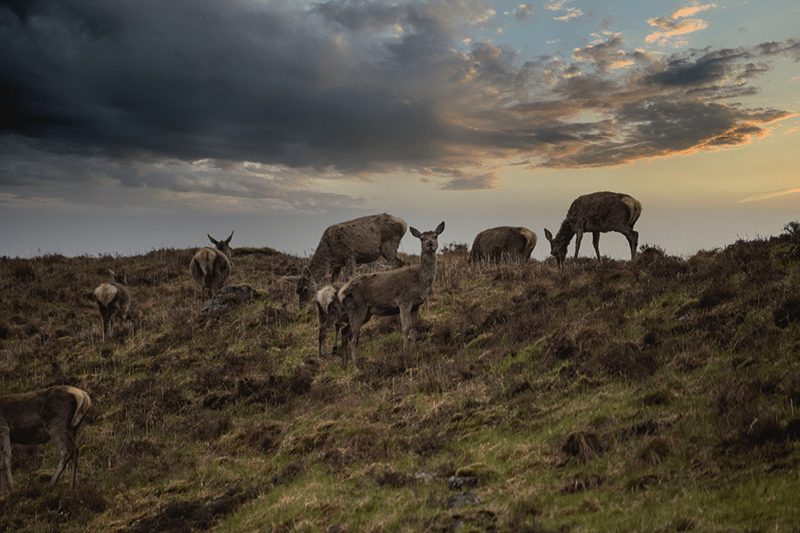
Observing Wildlife Responsibly
Maintain a Safe Distance: When observing wildlife, keep a respectful and safe distance. Use binoculars, spotting scopes, or telephoto lenses for close-up views without causing distress to the animals.
Avoid Feeding Wildlife: Feeding wildlife disrupts their natural foraging behaviors and can lead to habituation, where animals become reliant on human food. Feeding also poses risks to both wildlife and people.
Do Not Approach or Chase: Do not approach or chase wildlife, especially during breeding seasons or when young animals are present. Stress from human interaction can have adverse effects on their health and survival.
Stay Quiet and Unobtrusive: Minimize noise and sudden movements when near wildlife. Sudden disturbances can cause animals to flee, wasting energy they need for essential activities like foraging and raising their young.
Food Storage and Wildlife Protection
Proper Food Storage: Store food, trash, and scented items securely to prevent wildlife from accessing them. Use bear-resistant containers or hang food in bear bags where required. This practice protects both wildlife and your safety.
Cook Away from Sleeping Areas: Cook and eat at least 200 feet away from your sleeping area to minimize food odors near where you rest. This reduces the likelihood of attracting wildlife to your campsite.
Dispose of Trash Properly: Pack out all trash and food scraps, as even small scraps can attract wildlife. Leaving trash behind can habituate animals to human food and lead to more significant problems.
Respect Feeding Regulations: In some areas, regulations may prohibit feeding wildlife intentionally or unintentionally through improper food storage. Familiarize yourself with and adhere to these rules.
Interactions with Domesticated Animals
Leash Pets: When bringing pets into outdoor areas, keep them on a leash and under control at all times. Unrestrained pets can disrupt wildlife and damage fragile ecosystems.
Prevent Barking and Chasing: Minimize noise from barking dogs and prevent them from chasing or harassing wildlife. Keep pets calm and quiet to maintain the tranquility of the natural environment.
Pack Out Pet Waste: Properly dispose of pet waste by packing it out in designated waste bags or containers. Pet waste can transmit diseases to wildlife and affect water quality.
Respecting wildlife ensures that animals can continue to thrive in their natural habitats without undue stress or harm caused by human activities. By adhering to the “Respect Wildlife” principle, you contribute to the preservation of biodiversity and the opportunity for future generations to connect with the natural world and its inhabitants.
Principle 7: Be Considerate of Other Visitors
Be Considerate of Other Visitors is the seventh Leave No Trace principle, emphasizing the importance of creating a positive and respectful outdoor experience for all. By practicing good etiquette and minimizing disruptions, you help ensure that outdoor spaces remain enjoyable for everyone.
Trail Etiquette
Yield Right of Way: Familiarize yourself with right-of-way rules on trails. Typically, hikers yield to equestrians. Uphill travelers usually have the right of way.
Step Aside for Rest Breaks: If you need to stop for a break, move to the side of the trail to allow others to pass easily. This prevents congestion and ensures a smooth flow of traffic.
Announce Your Presence: When approaching others from behind on the trail, politely announce your presence. A simple “hello” or “passing on your left” can help avoid surprises.
Keep Groups Small: When hiking with a group, try to keep it small and manageable. Larger groups can create more disruption and may have a harder time following Leave No Trace principles.
Noise Management
Minimize Noise: Keep noise levels to a minimum to preserve the tranquility of natural spaces. Avoid playing loud music or engaging in boisterous behaviour that can disturb wildlife and other visitors.

Respect Quiet Zones: Some areas, such as designated wilderness areas or wildlife habitats, have regulations promoting quiet and solitude. Respect these zones and maintain a peaceful atmosphere.
Use Earphones: If you enjoy listening to music or podcasts while hiking, use headphones or earphones to keep the sounds to yourself and avoid disturbing others.
Sharing Public Spaces
Practice Inclusive Behaviour: Be inclusive and welcoming to all visitors, regardless of their backgrounds, abilities, or outdoor experience. Encourage a diverse range of people to enjoy the outdoors.
Respect Campsite Boundaries: If camping in a shared campground, respect the boundaries of your campsite and avoid encroaching on neighbouring sites.
Control Pets: If you have pets with you, keep them under control and on a leash where required. Ensure that they do not approach or disturb other visitors.
Educate and Lead by Example: If you witness others engaging in disrespectful behaviour, kindly educate them about Leave No Trace principles and proper etiquette. Lead by example in demonstrating considerate outdoor behaviour.
Being considerate of other visitors creates a welcoming and harmonious outdoor environment where everyone can appreciate the beauty of nature and the opportunities for recreation. By practicing trail etiquette, managing noise, and sharing public spaces responsibly, you contribute to a positive outdoor community and help ensure that outdoor spaces remain accessible and enjoyable for all.
Leave No Trace and Wilderness Ethics
Wilderness ethics are at the heart of Leave No Trace principles, aligning with the Wilderness Act’s core values of preserving the character and solitude of designated wilderness areas. Understanding these ethics is vital for responsible outdoor exploration.
Here’s how Leave No Trace and wilderness ethics intersect:
Wilderness Ethics and the Wilderness Act
The Wilderness Act: Enacted in 1964, the Wilderness Act established the National Wilderness Preservation System in the United States. It designates wilderness areas to be protected and preserved in their natural state.
The Act emphasizes the preservation of wilderness character, including the protection of solitude, untrammelled landscapes, and the preservation of natural conditions.
Leave No Trace Alignment: Leave No Trace principles align seamlessly with the Wilderness Act’s intent. They emphasize minimal impact, respect for natural processes, and the preservation of wilderness character, thus promoting the Act’s core values.
Permits and Regulations
Permits for Wilderness Areas: Many wilderness areas require permits for entry, especially for overnight stays. These permits help manage visitation and protect sensitive ecosystems. Be sure to obtain the necessary permits and follow all regulations associated with your visit.
Leave No Trace Practices and Regulations: Leave No Trace principles often overlap with wilderness regulations. For example, regulations may require the use of bear-resistant containers, campsite reservations, or waste disposal procedures that align with Leave No Trace recommendations.
Leave No Trace in Wilderness Areas
Minimal Impact Camping: When camping in wilderness areas, follow Leave No Trace principles diligently. Choose established campsites when available, travel and camp on durable surfaces, dispose of waste properly, and leave what you find.
Respect for Wildlife: In wilderness areas, the emphasis is on protecting wildlife and their habitats. Observe wildlife responsibly from a distance, avoid disturbing nesting sites, and minimize noise and light pollution that can disrupt natural behaviours.
Fire and Campfire Regulations: Many wilderness areas have strict regulations concerning fires and campfires. In some areas, fires may be prohibited to prevent wildfires and preserve fragile ecosystems. Always adhere to these regulations.
Leave No Trace-Specific Regulations: Be aware of any wilderness-specific Leave No Trace regulations that apply to the area you’re visiting. These may include requirements for bear canisters, pack-out toilets, or specific trail-use guidelines.
Advocacy and Education: In wilderness areas, the Leave No Trace Centre for Outdoor Ethics often works alongside land management agencies to educate visitors about responsible outdoor practices. Support and engage in these educational efforts to promote responsible wilderness ethics.
Leave No Trace and wilderness ethics share a common goal: to protect and preserve the wilderness experience for present and future generations. By following Leave No Trace principles and adhering to wilderness regulations, you help maintain the pristine and unspoiled character of these remarkable natural areas.
Leave No Trace and Leave a Positive Impact
Leave No Trace principles go beyond minimizing environmental impact; they empower outdoor enthusiasts to leave a positive and lasting legacy in the natural world. Here’s how you can make a difference through responsible outdoor recreation:
The Ripple Effect of Responsible Outdoor Recreation
Setting a Positive Example: When you practice Leave No Trace principles, you set a powerful example for fellow outdoor enthusiasts. Your actions inspire others to follow suit, creating a ripple effect of responsible behaviour.
Protecting Fragile Ecosystems: By treading lightly and minimizing your impact, you contribute to the preservation of fragile ecosystems. This, in turn, protects biodiversity, ensures clean water sources, and maintains the natural beauty of landscapes.
Fostering a Sense of Stewardship: Responsible outdoor recreation fosters a sense of stewardship for the environment. People who connect with nature through Leave No Trace are more likely to become advocates for its protection.
Leave No Trace Advocacy and Education
Education and Outreach: Engage in Leave No Trace advocacy and education efforts within your outdoor community. Share your knowledge of Leave No Trace principles with friends, family, and fellow adventurers.
Participate in Workshops and Training: Attend Leave No Trace workshops, webinars, or training sessions to deepen your understanding and become a Leave No Trace Trainer or Master Educator. This allows you to teach others about responsible outdoor practices.
Promote Responsible Recreation Online: Use social media and online forums to promote Leave No Trace principles. Share your outdoor experiences and the importance of responsible behaviour, reaching a broader audience.
Volunteering and Leave No Trace Organizations
Join Leave No Trace Organizations: Consider joining local or national Leave No Trace organizations and actively participate in their programs, events, and conservation initiatives.
Volunteer in Outdoor Stewardship: Get involved in trail maintenance, cleanup efforts, and habitat restoration projects. Many organizations and agencies coordinate volunteer opportunities that align with Leave No Trace values.
Advocate for Protected Areas: Support the designation and protection of wild spaces, national parks, and wilderness areas. Advocate for policies that prioritize conservation and sustainable outdoor access.
Lead by Example: Be a role model for responsible outdoor behavior. Encourage others to follow Leave No Trace principles, whether you’re on a guided trip, a group outing, or simply enjoying the outdoors with friends and family.
Responsible outdoor recreation is not only about minimizing impact; it’s about leaving a positive mark on the environment and inspiring a new generation of outdoor enthusiasts to do the same.
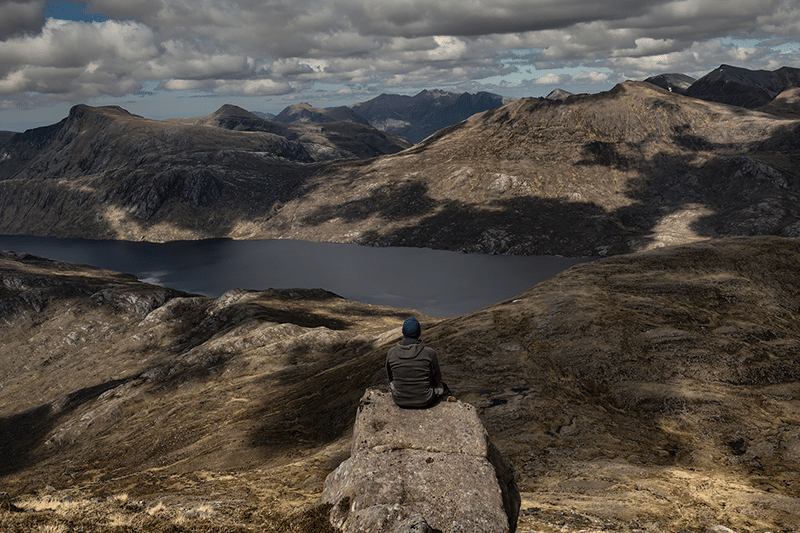
Your commitment to Leave No Trace principles and your active involvement in advocacy, education, and volunteering can help ensure that the natural world remains a source of wonder and inspiration for generations to come.
Conclusion
In the world of outdoor recreation, every enthusiast plays a crucial role in shaping the future of our natural landscapes.
Leave No Trace principles serve as a compass for responsible behavior, guiding us towards harmonious coexistence with the environment we hold dear.
As outdoor lovers, we must recognize that our actions, no matter how seemingly insignificant, have a profound impact on the places we visit. By embracing Leave No Trace, we become stewards of the wilderness, responsible for preserving its beauty and integrity.
The Ongoing Commitment to Leave No Trace
Leave No Trace is not a one-time practice but an enduring commitment. It requires continuous learning, self-awareness, and dedication to environmental ethics. As we venture into the great outdoors, let us remember that we are not just visitors but temporary inhabitants of these cherished landscapes. Our responsibility is to minimize our impact, protect wildlife, and maintain the sanctity of these natural spaces.
Leave No Trace is not a set of rigid rules but a flexible framework that adapts to different environments, activities, and conditions.
It empowers us to make informed decisions, to adapt to change, and to respect the ever-evolving needs of our ecosystems. It encourages us to foster a sense of wonder and reverence for the natural world and to inspire others to follow in our footsteps.
Inspiring a Sustainable Outdoor Legacy
As advocates of Leave No Trace, we have the power to inspire a sustainable outdoor legacy for future generations.
By sharing our knowledge, leading by example, and advocating for responsible recreation, we ensure that the wilderness remains a source of solace, adventure, and inspiration for all. Our collective efforts can protect ecosystems, preserve the character of wilderness areas, and allow others to experience the transformative beauty of nature.
Let us be mindful that the legacy we leave behind is not measured in footsteps taken but in the positive impact we make.
Together, we can safeguard the natural world, nurture a love for the outdoors in others, and forge a path toward a future where Leave No Trace is not just a principle but a way of life—a legacy that ensures the enduring beauty and health of our planet for generations to come.
Learn More
Check out the incredible outdoor clothing companies from the following countries:

